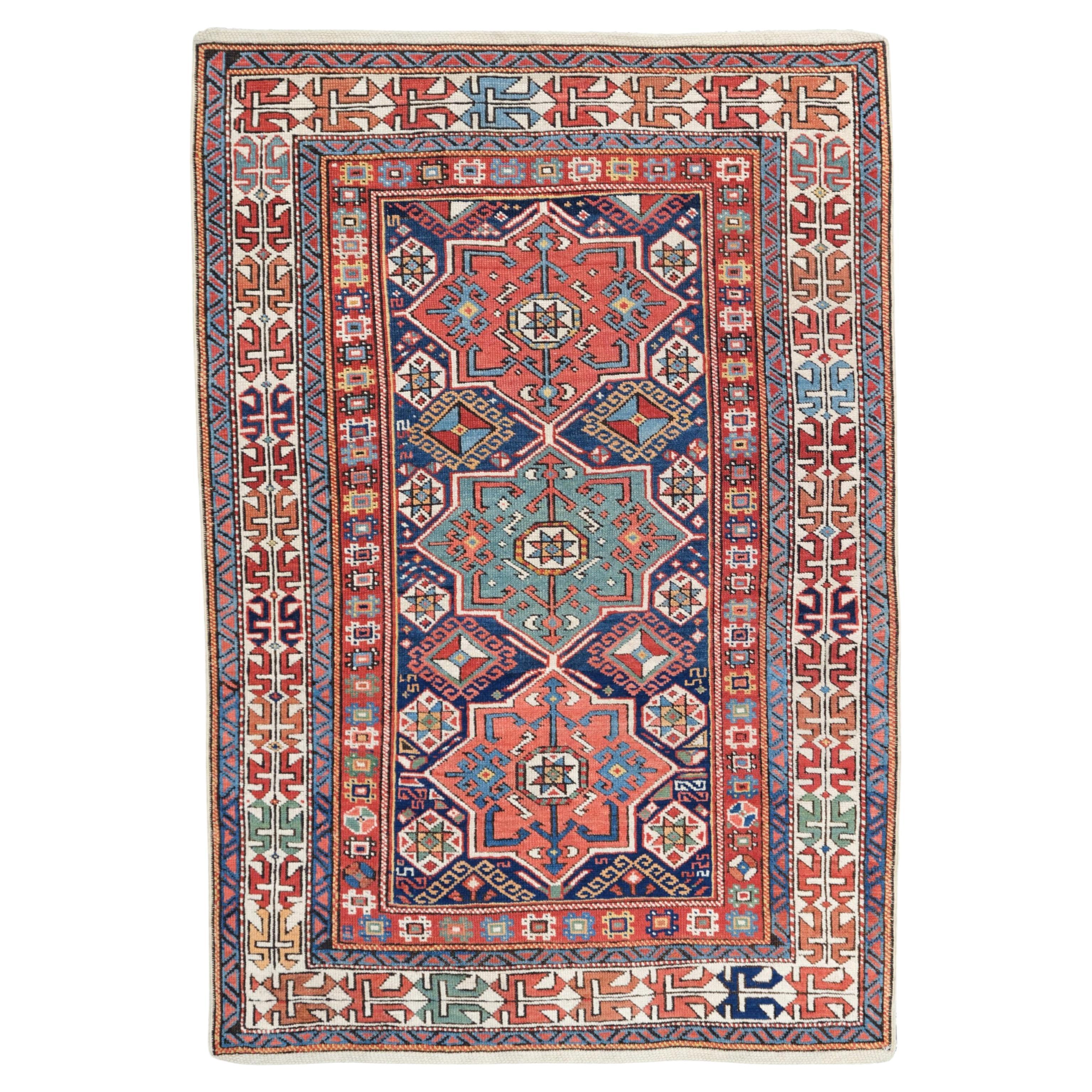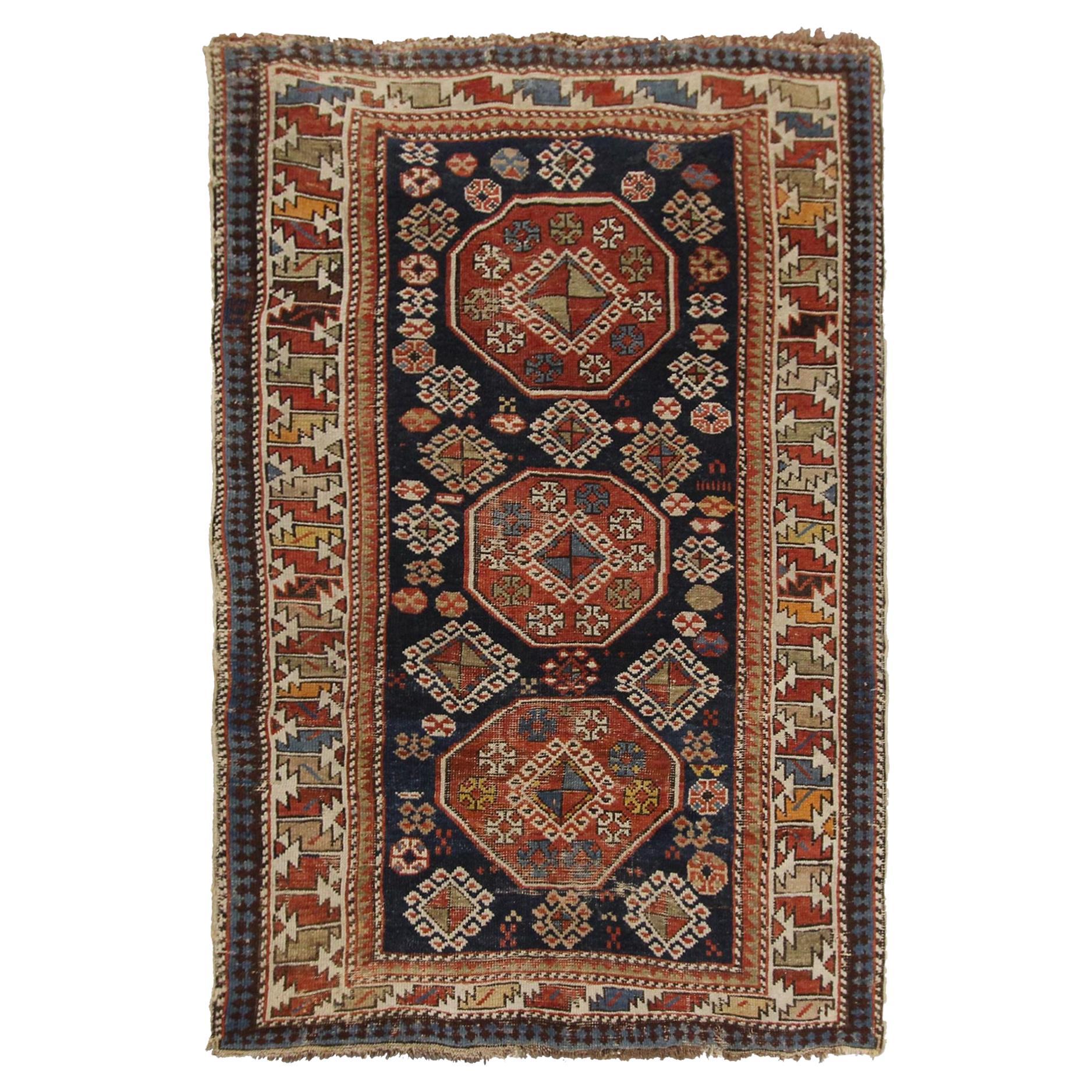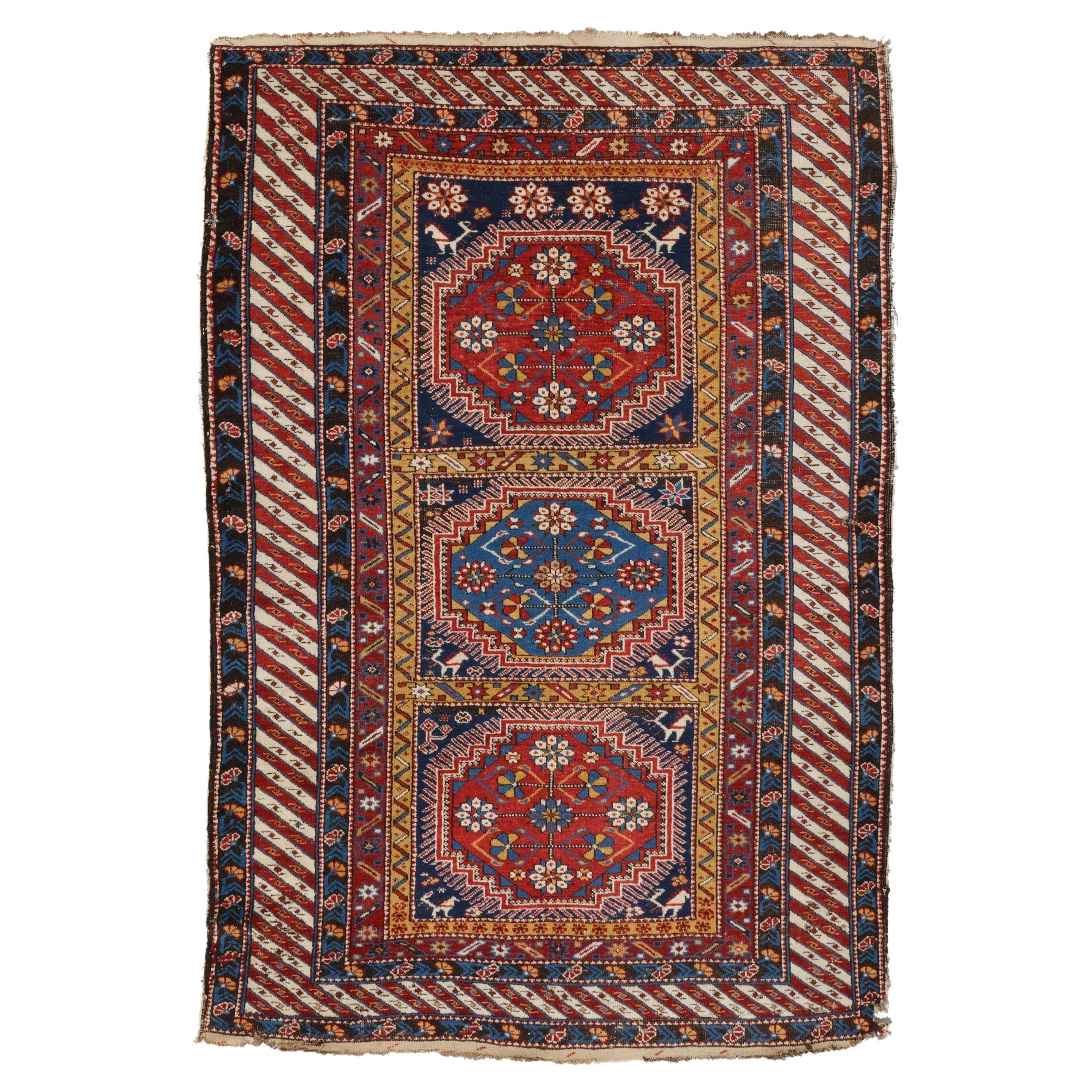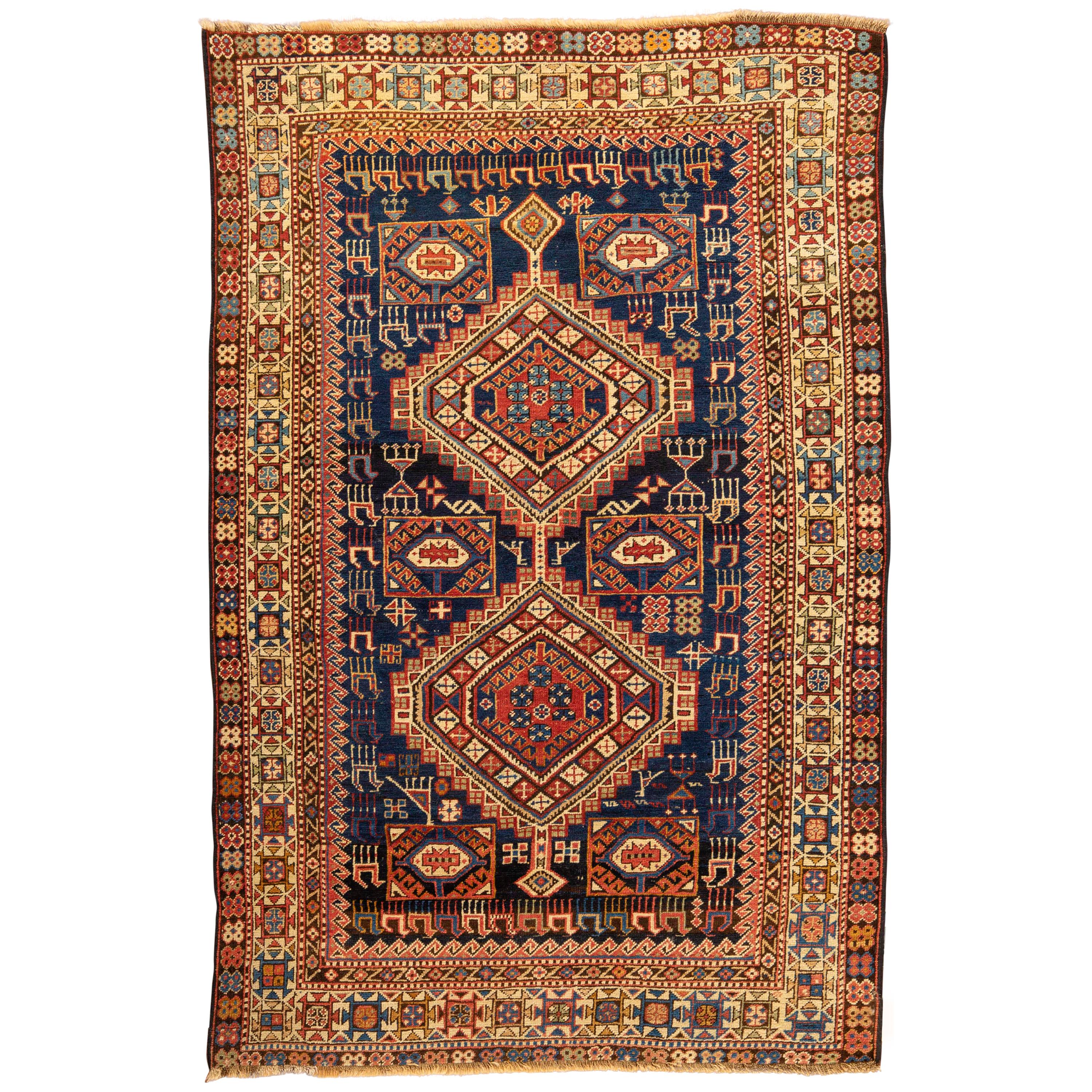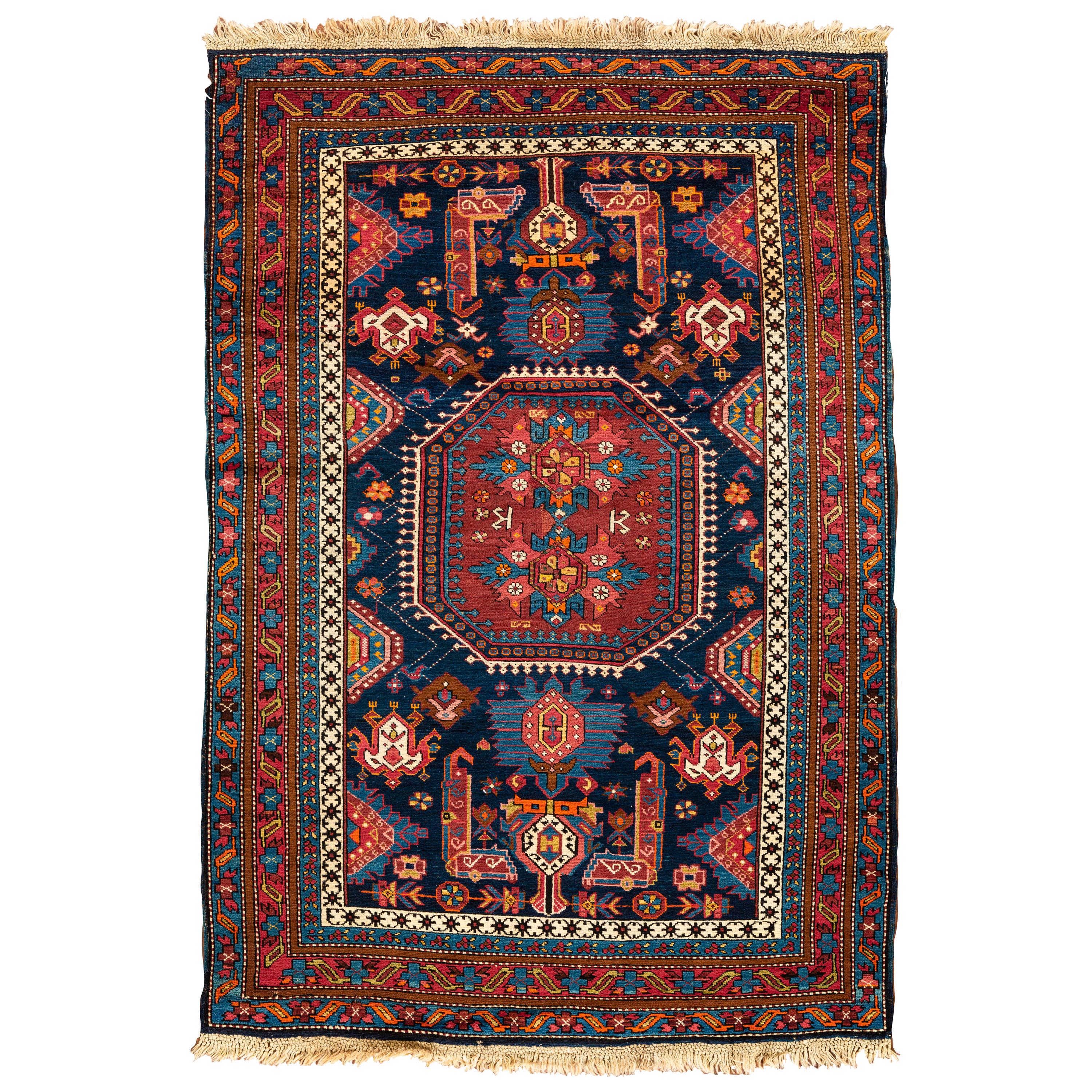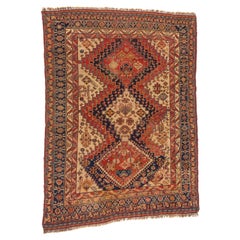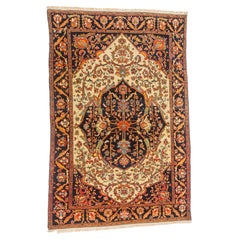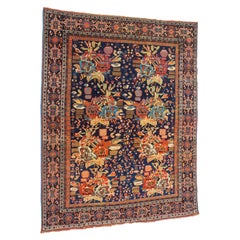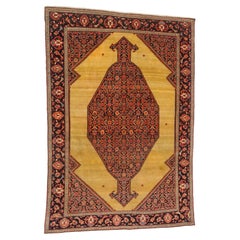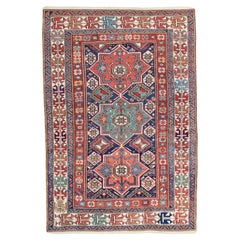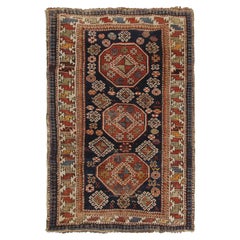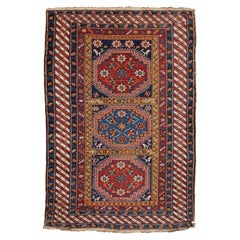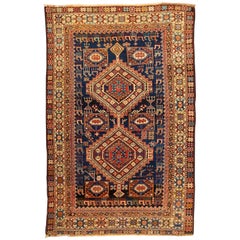Items Similar to Antique 1880 Shirvan Caucasian investment carpet . rare, excellent condition
Want more images or videos?
Request additional images or videos from the seller
1 of 13
Antique 1880 Shirvan Caucasian investment carpet . rare, excellent condition
$7,900
£5,934.70
€6,843.68
CA$10,962.28
A$12,181.51
CHF 6,383.24
MX$149,384.53
NOK 81,414.53
SEK 76,591.80
DKK 51,078.28
Shipping
Retrieving quote...The 1stDibs Promise:
Authenticity Guarantee,
Money-Back Guarantee,
24-Hour Cancellation
About the Item
From a Philadelphia Collector
This is a very robust member of the esteemed, and increasingly rare 19th century Afstaka “family”. It is slightly longer and wider than many examples of this age. Like all examples it holds its own uniquenesses , a handmade product of at least a year’s work by the female weaver .
It appears at first glance to be essentially geometric. Closer attention reveals many items of subtle variation and serendipity in the design execution. It is mesmerising to look carefully at this very sturdily woven rug. It slowly reveals a panoply of color and a seemingly random, natural universe of forms: abstract flowers, animals and symbols such as the horizontal S in reference to Zoroaster.
The natural dyes are particularly resplendent in this piece, especially the yellow of the central medallion, derived from saffron and/or local flowers, probably both, given the intensity of the color. Note how the rich indigo moves into a full black background, an unusual feature which gives a power to the overall design statement.
As is the case with most Caucasian village carpets the sense of a celebration of nature and life is evident. The explosive head and bottom figures “ignite “the overall composition. This is great tribal/village art.
The borders (note the double width border at bottom) are superbly executed in this powerful Caucasian style, more detailed than found in many examples.
This rug is ideal for a large hallway and is durable enough to withstand medium heavy wear for many decades.
Or it could enliven any number of other rooms and will provide wonderful viewing enjoyment, as an investment piece.
We rate it in the top 10% of the Afstaka “family” style for design, color and wool quality amongst the steeply declining number extant. Noting that Afstakas are among the three or four most sought after “types “of 19th century Caucasuian carpets along with the Eagle Kazaks, Sewans and Qubas: all rare and precious investment items if they are fine pieces . Though only the Afstakas generally come in this longer hallway -suitable format.
$12,800.
- Dimensions:Width: 52 in (132.08 cm)Length: 112 in (284.48 cm)
- Materials and Techniques:Wool,Woven
- Place of Origin:
- Period:
- Date of Manufacture:1880
- Condition:For a piece of this age it is in excellent condition, no repairs and very strong and solid.
- Seller Location:WYNNUM, AU
- Reference Number:Seller: FAC4023 1231stDibs: LU7409231330372
About the Seller
No Reviews Yet
Vetted Professional Seller
Every seller passes strict standards for authenticity and reliability
1stDibs seller since 2022
- ShippingRetrieving quote...Shipping from: WYNNUM, Australia
- Return Policy
Authenticity Guarantee
In the unlikely event there’s an issue with an item’s authenticity, contact us within 1 year for a full refund. DetailsMoney-Back Guarantee
If your item is not as described, is damaged in transit, or does not arrive, contact us within 7 days for a full refund. Details24-Hour Cancellation
You have a 24-hour grace period in which to reconsider your purchase, with no questions asked.Vetted Professional Sellers
Our world-class sellers must adhere to strict standards for service and quality, maintaining the integrity of our listings.Price-Match Guarantee
If you find that a seller listed the same item for a lower price elsewhere, we’ll match it.Trusted Global Delivery
Our best-in-class carrier network provides specialized shipping options worldwide, including custom delivery.More From This Seller
View AllUnusually Fine Qashgai'i 1870 Antique Tribal rug short term reduction
Located in WYNNUM, QLD
Qashgai circa 1870-80
Qashgai, UNUSUALLY FINE ANTIQUE TRIBAL PIECE circa 1870 - 1880
3 x 5 ft
Acquired from a French dealer
The Qashgai Federation...
Category
Antique 1870s Persian Persian Rugs
Materials
Wool
Aristocratic Ferahan Sarouk 1890 Antique Short Term Reduction
Located in WYNNUM, QLD
ARISTOCRATIC Ferahan Sarouk 1890
Measures: 6 ft 8 inches x 4 foot 4 inches
Ladies, if you seek a gift for your much loved man, to make him feel like...
Category
Antique 1890s Persian Persian Rugs
Materials
Wool
$7,920 Sale Price
32% Off
Antique 19th century Afshar , Perfect condition , Plush
Located in WYNNUM, QLD
From a Boston Collector.
Remarkably Creative.
This is another of our small stock of Afshar collectibles which astonish as to their artistic form. This example was recently acquired from a Boston collector’s estate. The wool, very soft, is of excellent quality and the weave very fine, the rug in superior condition.
Boston Antique carpet expert Michael Grogan declared it as one of the very finest and most original Afshar rugs he had ever seen.
This piece was recently used along with two others in a lecture series which pondered the question of likely influence of tribal (and arguably other Persian e,g, Montasham Kashan) rugs on the development of Western 20th century painting.
The abrupt break with traditional forms by a gifted female weaver in a remote location and in the throes of a nomadic life, considering her circumstances, is awe inspiring.
The wide and in cases unusual colors deployed (note the dark browns probably achieved with walnut shells in the dye vat...
Category
Antique 1890s Persian Persian Rugs
Materials
Wool
High Collectible 19th Century Ferahan Sarouk, Princely, at Short Term Reduction
Located in WYNNUM, QLD
Ferahan Sarouk Museum Quality
MUSEUM QUALITY Ferahan Sarouk, third quarter 19th century
6.6 x 4.5 feet
From a USA collector
Ferahan Sarouk carpets produced around the wider Arak (formerly Sultanabad) area from about 1850-1910 earned a deserved reputation as amongst the most desirable and imaginative finely woven carpets in Persia. As these things go, they morphed in style around 1910- 1920 into the differently woven Mahajirhan Sarouk fashion (quality examples of which are also in demand) and then disappeared entirely.
Their desirability rests not only on fine weaving, and excellent wool. Many of the better examples were commissioned by aristocrats or wealthy merchants who encouraged creativity, in an actively competitive way; rugs during this period, as before, were direct illustrations of an individual’s wealth, power and prestige.
Beyond this lay a more fundamental and seemingly contradictory set of motivations by the weavers. At one and the same time they sought to emulate the great court carpets in finesse and design. And yet-- they applied rustic or village, and even tribal elements and nuances to their designs. The result was a cavalcade of creativity.
So, a village-based genre came into being which produced primarily an approx. 6x4 rug size format, and also provided, if more rarely, larger formats, which command increasingly high prices, due to their rarity, visual excitement and grandeur.
The artistic achievement of this “school” had to do with marrying elegance and a degree of formalism with whimsy, and design innovation. They offer a charm and a certain magic beyond that of court and most city carpets.
As in any area or era, there is a quality spectrum ranging from mediocre to highly superior. Superiority is judged of course as to weave and wool quality. It is rather unusual, though, to encounter pieces made before 1890 -which are bona fide Ferahan Sarouks- with poor wool or weaving: standards were upheld during this period, and natural dyes were widely employed, particularly in the wider Arak (then Sultanabad) region.
Thus, as an investment collectible to adorn the home we believe the ultimate criterion is aesthetics, this being an art form, after all.
Ferahan Sarouks have been a special area of interest for us over the decades both from artistic and investment perspectives.
Allowing for personal taste, our suggestions are few and simple. A Ferahan Sarouk ought to display a wide colour palette, fine drawing and delicate, sometimes “intense “ detail. The finest pieces also display an elevated sense of balance in the use of space.
We have seen many finely woven pieces which in our view are garish and lack one of the two key artistic elements intrinsic to the better examples of this genre – elegance. Sometimes they are overly cluttered; the drawing artistry is muddled or lost. In other cases odd and ineffective design devices are used, detracting from or interfering with an otherwise good design. The era of the Ferahan Sarouk was rife with experiments, not all of them successful.
The other important attribute, when it can be found, is original artistic creativity, even serendipity, -- or effective design innovation within the compass of this rug type and the unique standards of its prime period.
On average, we examine between 30-40 antique Ferahan Sarouks to achieve one acquisition, for the benefit of our clients.
This highly collectible more than 150-year-old carpet is an apex achievement of superior artistry and innovation. As an exemplar of its genre, it can be reasonably described as Museum quality, a term we do not often employ.
Please observe the stunning precision of the inner guard and its pinpoint sharp hooks. The elongation of the central medallion is one of its subtle but powerful innovations in form. The nod to asymmetry – which displays a refined sense of humour - is seen in the use of the small diamond figures, as one is deliberately missing from the right hand side: a wry nod to asymmetry, in an otherwise perfectly symmetrical creation.
The ultimate achievement here is in the fineness of the weaving itself, on close inspection. The herati pattern in the medallion and corners achieves an etched-on quality, a very uncommon level of attention to detail and perfectionism: clearly the work of a master. This artistic sense extends to the outer ground which is a superb example of the most subtle abrash, one of the most refined we have had the honor of viewing. The unusual beige/brown tones in the field were probably achieved by adding onion skins to the die vat. These extremely fine gradations of colour are rarely seen.(NB the colour photographs create a slightly misleading- overly yellow burnish to the field colour in spite of expert photographic efforts ) .
The deliberate choice of an ink black use of indigo provides a powerful frame (border) for this piece of art, which note in the lower right-hand corner is lifted slightly through abrash to a deep blue – to highlight the design and use of emerald green in the rosettes. The green shades lighten as the border ascends harmonizing with the tones in the central medallion.
The floating flow of flowers in the border is beautifully executed, with up to seven colours in a single figure.
No doubt a piece commissioned by an aristocrat around 1870, it is – remarkably- in virtually perfect condition. It appears to have had very minimal footwear, and great care; a piece which was proudly displayed from time to time and appreciated. Its density and strong foundation would however allow regular use within a home, and in a spacious contemporary home or office could make a wall hanging of striking impact.
This remarkable one of a kind piece is on short term reduction to coincide with our launch on 1st Dibs . Fair market value is approximately $22,000 .
Fine art as investment ? The WSJ made the following comments this year :
The vigor of the art market may seem counterintuitive, but it makes sense in the current environment,” economist Tyler Cowen recently wrote in The Washington Post. “First, many of the wealthy have been buying additional homes and wish to furnish them with art. Second, the recent run-up in inflation rates around the world has intensified the search for hedges.”
While the aforementioned artworks fall into traditional categories, some less-prominent forms of fine art also represent ideal investment opportunities, especially because they offer more attractive—i.e., significantly less costly—entry points for new collectors. Take high-collectible and connoisseur-caliber antique Oriental rugs, for example. The best 19th-century examples often sell privately between five figures and low six figures.
Today, that obscurity is fading. According to Ben Evans, the editor of Hali Magazine—a publication dedicated to the international rug and textile market—there are two primary factors to explain why antique rugs are beginning to enjoy their moment in the spotlight. “Cultural curiosity and collecting...
Category
Antique 1880s Persian Persian Rugs
Materials
Wool
Antique Melas Turkish Prayer Rug
Located in WYNNUM, QLD
This is admittedly a collector’s piece, for a connoisseur. Melas rugs became known and appreciated in Europe as early as 1700, though its history of weaving goes back at least severa...
Category
Antique Early 19th Century Turkish Turkish Rugs
Materials
Wool
Classic Antique 1870 Ferahan Sarouk -Intense Design Virtues
Located in WYNNUM, QLD
From an Australian Collector
Ferahan Sarouk carpets produced around the wider Arak (formerly Sultanabad) area from about 1850-1910 earned a deserved re...
Category
Antique 1870s Persian Persian Rugs
Materials
Wool
$6,320 Sale Price
36% Off
You May Also Like
Antique Shirvan Rug - Circa 1880, Antique Caucasian Rug
Located in Sultanahmet, 34
Antique Shirvan Rug 100 x 146 cm (39,3x57,4 In)
Antique Caucasian Shirvan star medallion rug from the Eastern Caucasus, Circa 1880.
This is an outstanding example of type, with thre...
Category
Antique 19th Century Caucasian Caucasian Rugs
Materials
Wool
$7,200 Sale Price
25% Off
Pre-1900 Antique Shirvan Caucasian Rug Caucasian Shirvan Rug Wool Foundation
Located in New York, NY
Authentic Antique Caucasian Shirvan rug Geometric
Blue
3'3" x 4'6"
3x5
99cm x 137cm
Circa 1890
"This is a Antique Caucasian Shirvan rug. This piece was acquired fr...
Category
Antique 1890s European Caucasian Rugs
Materials
Wool
$1,886 Sale Price
20% Off
Antique Shirvan Rug - Late Of The 19th Century Caucasian Shirvan Rug
Located in Sultanahmet, 34
Antique Shirvan Rug
Late Of The 19th Century Caucasian Shirvan Rug in Good Condition
Size: 117 x 172 cm (46x67,7 In)
The Shirvan carpet is a handmade floor covering in the Shirvan r...
Category
Antique Late 19th Century Caucasian Caucasian Rugs
Materials
Wool
Antique Caucasian Shirvan Rug, circa 1880 3'8 x 5'7
Located in Secaucus, NJ
Antique Caucasian Shirvan rug, circa 1880. These types of antique Caucasian rugs were woven in the eastern part of the region, mostly along the west coast of the Caspian Sea. The won...
Category
Antique 19th Century Caucasian Rugs
Materials
Wool
Antique Caucasian Shirvan Rug, circa 1880 4'6 x 7'11
Located in Secaucus, NJ
An antique Shirvan handwoven Caucasian rug, circa 1880. These types of antique Caucasian rugs were woven in the eastern part of the region, mostly along the west coast of the Caspian...
Category
Antique 19th Century Caucasian Caucasian Rugs
Materials
Wool
Antique Caucasian Shirvan Rug, circa 1880 3'10 x 5'9
Located in Secaucus, NJ
Antique Caucasian Shirvan Rug circa 1880. From east Caucasia a Shirvan handwoven rug circa 1880, with bold and vibrant colors, that create a true sense of beauty, to this tribal rug....
Category
Antique 19th Century Caucasian Caucasian Rugs
Materials
Wool
More Ways To Browse
Kazak Pinwheel Rugs
Pinwheel Kazak
Shirvan Karagashli
Adler Rug
Derbend Carpet
Caucasian Sumakh Kilim Rug
Kuba Box
Karachop Rug
Seichour Kuba Rugs
Lambalo Kazak
Dragon Sumac
1960s Vintage Travel Poster
Brass Gallery Table
Knoll Vintage Chairs
Reupholstered Sofa
San Francisco Used Furniture
French Art Deco Dining Room Set
Green And Blue Plates
